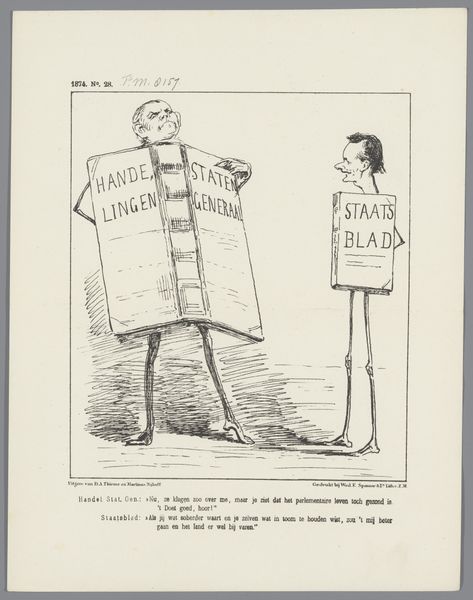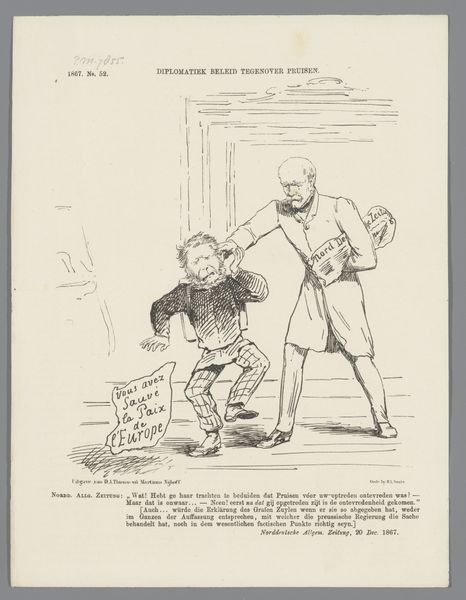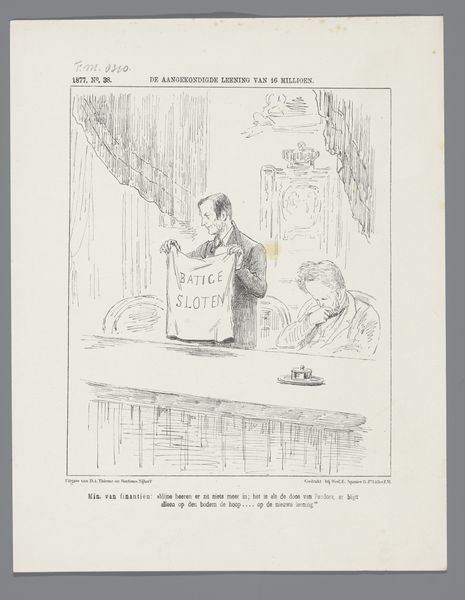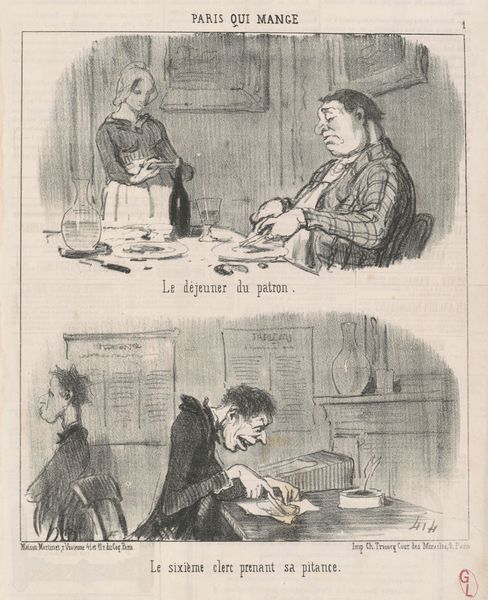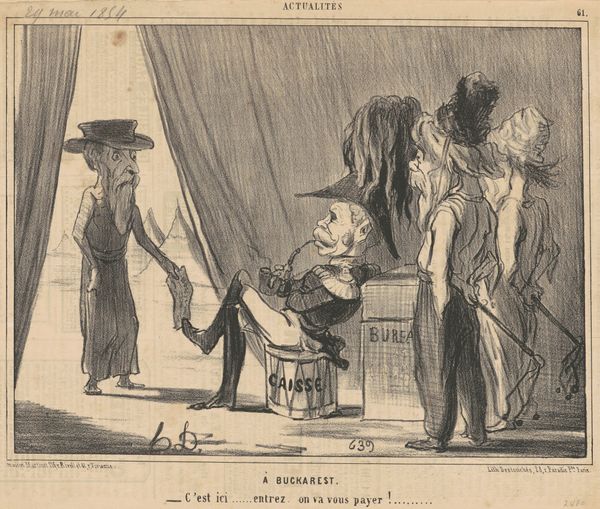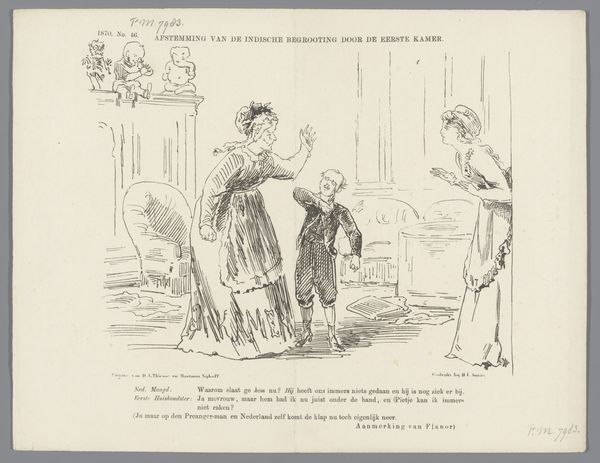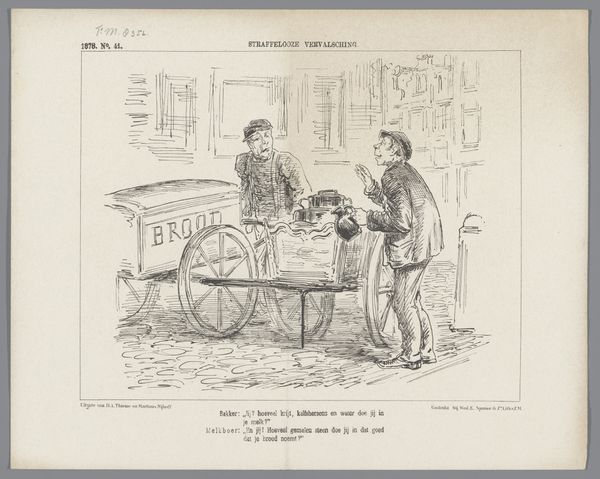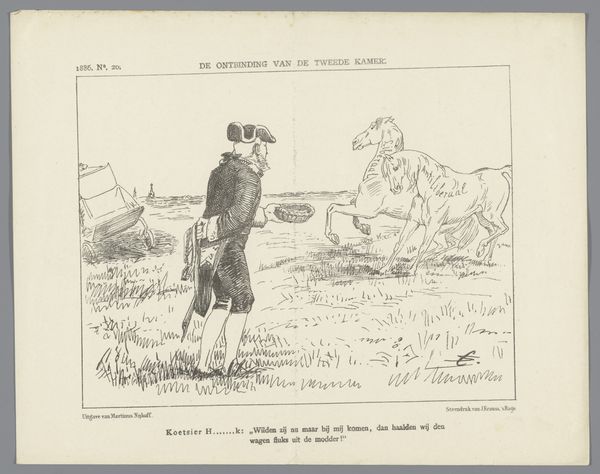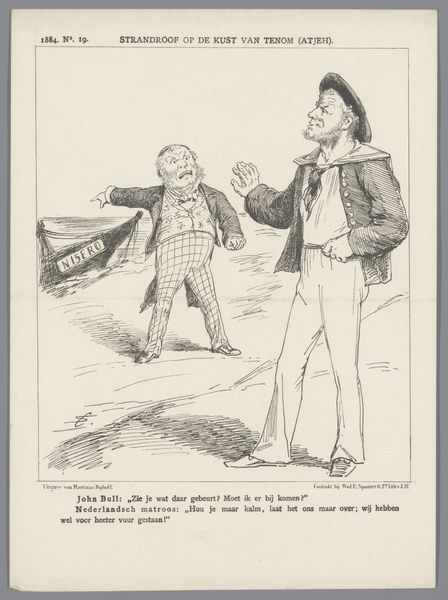
drawing, print, pencil, pen, poster
#
drawing
#
comic strip sketch
# print
#
old engraving style
#
cartoon sketch
#
text
#
personal sketchbook
#
pencil
#
symbolism
#
pen
#
poster
Copyright: Public domain
Curator: Look at this unassuming yet compelling poster, "Menu Leon Frapie" created by Théophile Alexandre Steinlen in 1905. What's your first reaction? Editor: It strikes me as nostalgic and somewhat melancholic. The figures are simply rendered, yet evoke a feeling of turn-of-the-century Parisian street life, particularly through the symbolic use of children and text together. Curator: It’s a lithographic print that also incorporates elements of pen and pencil drawing. Consider the implications of using such relatively inexpensive materials for something produced to celebrate a literary prize. There's a social dimension to its materiality that cannot be ignored. The deliberate choice moves away from established ideas of status and prestige. Editor: Exactly! The figures of the children carrying what looks like their own weight evokes the symbols of childhood innocence coupled with burden of carrying on societal messages. Are they symbols of societal expectations, weighed down perhaps? The "Journal" text alongside feels especially significant in that respect. Curator: We see these newspaper titles alongside these unassuming child laborers on a sketch inviting us to dinner and award giving for a literary price - which speaks volumes about the intersections of culture, media, and commerce. Note, too, how the visible texture of the paper and the lines add a sense of immediacy, bringing us into the printmaker's process of conceptualizing cultural criticism. It isn’t aiming to be an impeccable finished product. Editor: It makes you wonder about the implied message by pairing those details alongside what feels like youthful subjects—Steinlen skillfully merges those symbolic aspects to offer a potent comment on culture. I wonder about Steinlen’s intentions—did he deliberately combine the childlike, the burden of adulthood through labor, the grand award giving, and the commercial nature of journalism. Curator: He may have consciously positioned this print against more ornate modes of fine-art prints from the time, favoring something more democratic in its means of production. Its power resides in both its simple form and how it highlights labor's role in crafting even so-called "high" culture. Editor: True. Reflecting on this poster, I now realize how powerfully Steinlen used those visual metaphors to engage us, even today. Curator: Indeed. It's more than just a pretty picture. The artwork prompts a look into the layers of creation and societal implications.
Comments
No comments
Be the first to comment and join the conversation on the ultimate creative platform.

